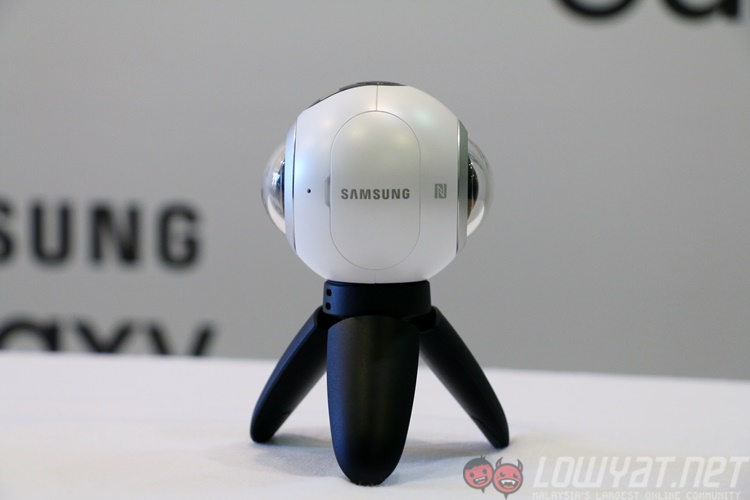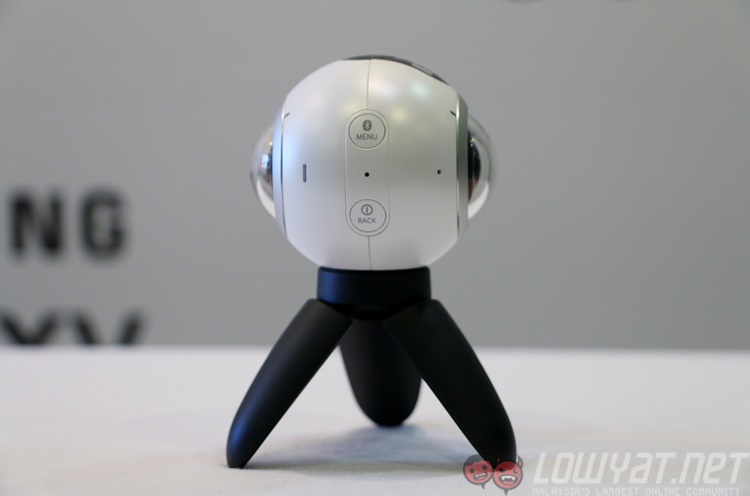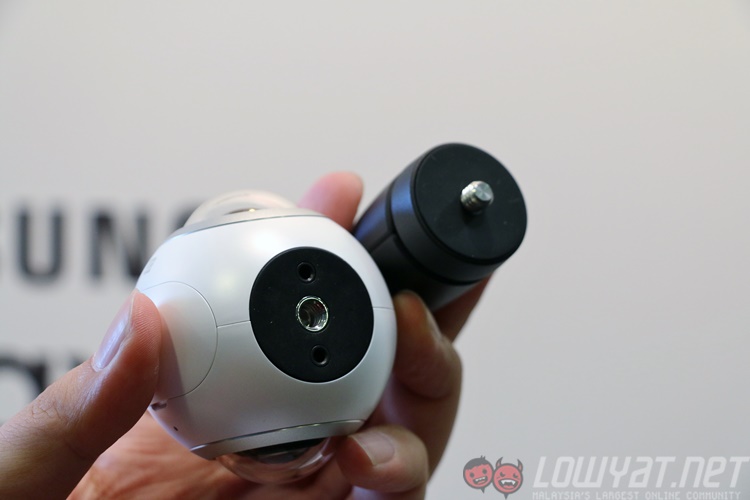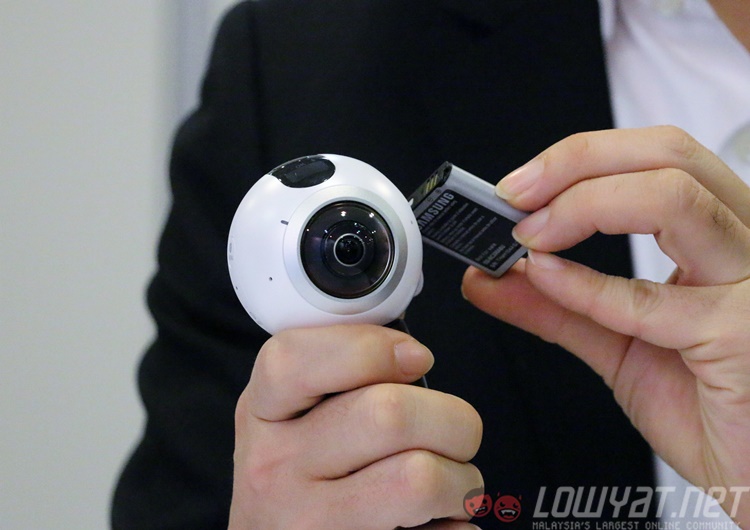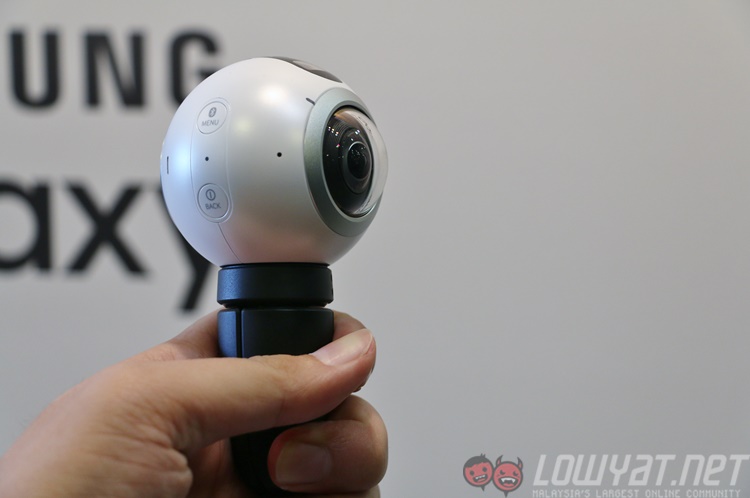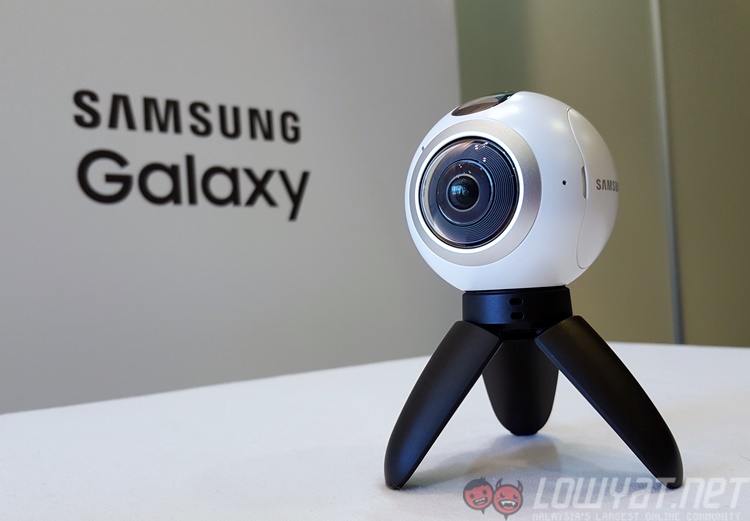
At its Unpacked 2016 event in Barcelona, Samsung has raised a few eyebrows with the announcement of its first-ever 360-degree camera, the Gear 360.
With the rise of VR related content as well as the proliferation of 360-degree videos on YouTube and, crucially, Facebook, Samsung has made its move to expanding what it calls the “Galaxy ecosystem”.
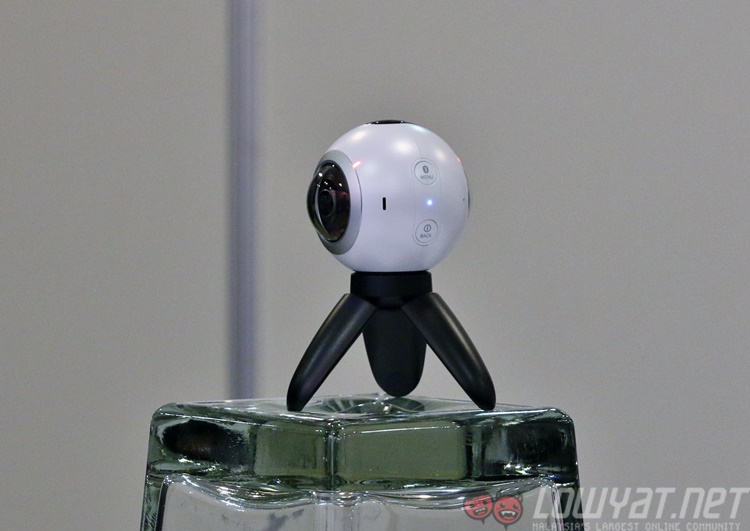
With a Samsung Galaxy smartphone at its heart, the ecosystem of devices already includes IoT home appliances, the Gear VR, and wearables like the Gear S2. Samsung is now turning its focus to content creators with the Gear 360.
Featuring a spherical compact shape, the Gear 360 looks nothing like the current go-to 360-degree camera, the Ricoh Theta. That said, the Gear 360’s design gets the basics right, and offers a mini tripod with every Gear 360.
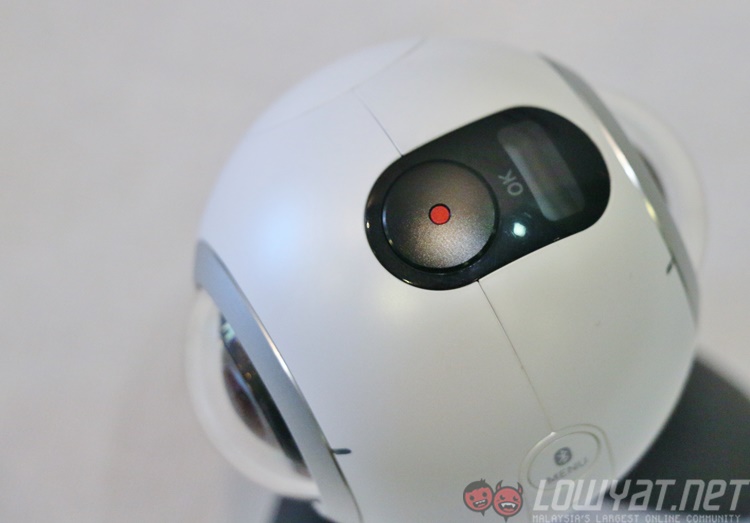
For starters, the two cameras on the Gear 360 are identical 15MP, f/2.0 BSI sensors fitted with fish-eye lens with a 195-degree field of view. When combined, the Gear 360 records videos at 3840 x 1920, and shoots 30MP still images. Inside, the Gear 360 is powered by Samsung’s DRIMe5s image processor.
At the top, there is a large button that doubles as a Record and power button. Next to it is a small display that shows useful information. On one side, there are two additional buttons: a Menu/Bluetooth toggle button, and a Back button. The opposite side has a flap that provides access to the Gear 360’s removable battery, microUSB port and microSD card slot which supports up to 128GB cards. Though not entirely waterproof, the Gear 360 is rated IP53 for dust and water resistance.
The mini tripod can also be removed, revealing a standard 1/4 inch tripod mount. This allows the Gear 360 to be used with every camera accessory that uses that mount, opening the Gear 360 to a huge pool of accessories.
While users can technically use the Gear 360 on its own, the Gear 360 app adds to the user experience. The app lets you use a smartphone as a remote viewfinder, remote control, and remote shutter. You can also view photos and videos shot with the Gear 360.
While all content captured on the Gear 360 is stored in the microSD card, they need to be stitched in order to view them in 360 degrees; the content after all is captured on two cameras. The app facilitates this by transferring the content to the phone, and utilizes the smartphone’s hardware to stitch 360-degree photos and videos.
As such, compatibility of the Gear 360 is limited only to the following Samsung smartphones: the Galaxy S7 and S7 edge, Galaxy S6 edge+ and Galaxy Note 5, as well as the Galaxy S6 and S6 edge.
Once that is done, you can view them on the Gear VR or any VR headset, or share them on platforms that support 360-degree content (i.e. Facebook and YouTube). The Gear 360 connects to a smartphone via NFC, Bluetooth 4.1, as well as WiFi Direct, and weighs just 153g.
The Gear 360 is likely to be a consumer-friendly device for budding content creators and those looking to experiment with 360-degree content, with enough flexibility to interest professionals. It will ship to selected countries globally from Q2 2016; pricing details will be revealed at the local launches.
Follow us on Instagram, Facebook, Twitter or Telegram for more updates and breaking news.

